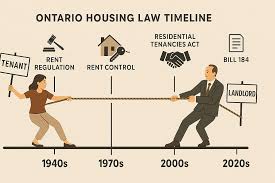Building a home is one of the biggest financial investments most people will ever make. While the process can be exciting, construction costs can quickly spiral out of control if not carefully managed. The good news is that with smart planning, informed decision-making, and careful shopping, you can significantly reduce expenses without compromising quality. Here’s how to minimize construction costs when building your next house — from choosing contractors to selecting furniture, windows, and even landscaping services.
Start with a clear and realistic budget
The foundation of cost control is a well-defined budget. Begin by determining how much you can comfortably spend, including a contingency fund of 10–15% for unexpected expenses. A common mistake is underestimating “soft costs” like permits, design fees, and utility connections. Get quotes for every stage early — design, materials, labor, and finishing touches — and regularly update your budget as plans evolve.
Opting for a simple design can dramatically lower costs. Complex floor plans, irregular shapes, or custom features increase material waste and labour time. A rectangular or square footprint, open floor plan, and standard roof pitch are the most cost-efficient designs. Work closely with your architect to simplify structural elements while maximizing functionality and aesthetic appeal.
Shop around for the best contractors
Contractor costs vary widely depending on experience, demand, and location. Never settle for the first quote. Instead, gather at least three bids for each major part of your build — framing, roofing, plumbing, electrical, and finishing work.
When comparing bids, don’t automatically choose the cheapest. Review each quote for what’s included: materials, labour, warranties, and timeline. Sometimes a higher quote may save money later by preventing costly mistakes or delays.
Ask contractors for references and proof of insurance, and take time to read online reviews. Visit previous projects if possible — seeing the quality of their work firsthand can prevent future headaches. It’s also smart to clarify payment terms early. Avoid large upfront deposits; instead, structure payments by milestones to keep accountability high.
Timing and flexibility can save thousands
Construction prices fluctuate with demand. Building during the off-season — often late fall or winter — can yield lower labour rates and better material pricing, as contractors are less busy. Flexibility in your start date allows you to capitalize on promotions and supplier discounts.
Buying materials in advance or during sales can also help. Keep an eye on hardware and lumber store flyers; items like drywall, flooring, and paint often go on sale seasonally.
Smart sourcing for windows, furniture, and fixtures
Windows and doors are big-ticket items that greatly affect both the look and efficiency of your home. Compare prices from multiple suppliers and ask about bulk or contractor discounts. Many local manufacturers offer factory-direct pricing, bypassing retailer markups. Energy-efficient models may cost more upfront but reduce utility bills long-term — an investment that pays off.
When it comes to furniture and fixtures, mix high and low options. Splurge on key pieces that affect comfort or design (like a quality sofa or bed) but save on accent items from outlet stores, clearance sections, or online marketplaces like Facebook Marketplace, Wayfair’s open-box deals, or IKEA sales. Many buyers even sell near-new furniture after staging a home, offering huge savings.
Don’t overlook reclaimed materials. Salvage yards, Habitat for Humanity ReStores, and architectural salvage shops often sell gently used windows, doors, tiles, and cabinets for a fraction of retail prices. These can add both character and sustainability to your project.
Landscaping on a budget
Landscaping often becomes an afterthought — and an expensive one. To save money, plan your outdoor space early, not after construction. By incorporating basic grading and topsoil into the main contract, you’ll avoid paying for extra equipment later.
Plant native species, which are easier to maintain and require less water. If hiring landscapers, request multiple quotes and check references. Alternatively, consider doing simple work yourself, such as laying sod, planting shrubs, or installing mulch. Buying plants in the fall or from local nurseries can also lead to discounts.
Plan, compare, and stay involved
Finally, the most effective way to minimize construction costs is to stay actively involved. Visit the site regularly, review invoices, and communicate clearly with contractors. Misunderstandings or last-minute changes often lead to expensive rework.
Using project management tools like Trello or Google Sheets can help you track progress, payments, and expenses. Transparency and organization are your best defenses against budget creep.
In essence, minimizing construction costs doesn’t mean cutting corners — it’s about strategic planning, comparison shopping, and thoughtful choices. By simplifying your design, getting multiple bids, sourcing materials wisely, and managing your project closely, you can build a beautiful, durable home without breaking the bank. Whether it’s negotiating contractor rates, finding deals on windows or furniture, or DIY landscaping, each decision adds up to substantial savings and a home that reflects both your vision and your financial wisdom.
Search
Categories
Recent posts
Tags
- a louer
- affordable apartments Toronto
- affordable housing
- affordable housing solutions Canada
- Air Filters
- air quality
- apartment
- apartment close to public transport
- apartment for rent
- apartment for rent montreal
- apartment for rent Toronto
- apartment insurance
- appartement
- appliances
- ARTICLE
- available for rent
- background check
- bacteria
- best city to live in canada
- best healthcare
- bicycle
- bicycle path
- bike lane
- bike path
- bikes
- bill 16
- burglar
- buy a house
- buying a house
- carbon monoxide detector
- cars
- centris
- city
- cleaning
- cleaning products
- cleaning wood floors
- closet
- closet space
- clothing organizer
- compact rental units
- condo
- condo association laws
- condo fees
- condo for rent
- condo insurance
- construction budget
- construction contractors
- construction cost
- credit check
- decorating room
- digital transaction
- door lock
- doors
- downtown micro apartments
- electricity
- employment verification
- energy consumption
- energy cost
- energy saving
- engineered hardwood
- fire alarm
- fire detector
- fire extinguisher
- floor
- flooring
- for rent
- For rent in Montreal
- For rent in Toronto
- For rent in Vancouver
- for sale
- furniture
- gas
- healthy candles
- healthy lifestyle
- home
- house
- house for rent
- house for sale
- house garden
- house insurance
- house locks
- house plants
- immigrant
- importance of water leak detector
- indoor plants
- insurance
- intergenerational home
- intergenerational living
- interior designer
- investment
- landlord
- lease
- lease responsibility
- long term care facility
- low crime
- mattress
- micro-apartments Vancouver
- micro-units Toronto
- mls
- move to canada
- moving company
- Moving to canada
- moving truck
- multigenerational home
- multiplex
- nano-suites
- nano-suites Toronto
- new apartment
- new color
- oil
- old age home
- online house purchase
- Ontario
- paint colors
- passive income
- pet friendly apartment
- pet friendly plants
- planning for vacation
- plants
- porcelain tile
- property
- questions for apartment rental
- real estate
- real estate agent
- real estate broker
- real estate online
- real estate transaction
- realtor
- renal history
- rent
- rent an apartment
- rent control
- rent obligations
- rental
- rental board
- rental scam
- renting
- residential income
- residential lease
- residential rental
- revenue property
- safe area
- safe candle in apartment
- safe candle in house
- safe candles
- safety
- scam
- security
- sell a house
- seniors residence
- small apartments Vancouver
- smoke detector
- social media and real estate
- soy candle
- soy candles made with essential oils
- storage space
- student apartment
- student housing
- tenant
- tiny rentals Canada
- traffic
- trending color
- trending paint
- university student rental
- ventilation
- vinyl floor
- water alarm
- water damage
- water leak detector
- window frame
- window manufacturer
- windows
- wood floors



